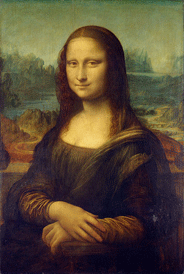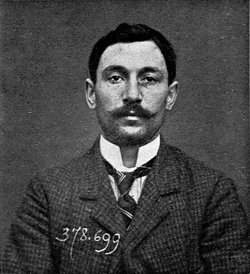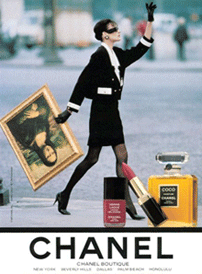|
Vincenzo Peruggia, the man who stole the Mona Lisa
Answer
to Name
This Famous Antique Game - November 2013
|
 |
Vincenzo Peruggia, the man who stole the Mona Lisa in 1911, was correctly identified by Ted Carlton of Utah, Teresa P. Bland, Robert Bernier, Sherron Lawson, and Julie Kimbrell of the Old School Antique Mall in Sylva, N.C.
Peruggia was an Italian living in Paris who worked for the Louvre Museum part time. On Sunday, Aug. 20, 1911, he hid in the museum, and the next day when it was closed, he walked into the gallery where the Mona Lisa was exhibited and easily took it off the wall. In a storage area, he removed the frame from the masterpiece painted on a wooden panel (measuring just 2 feet 6 inches high x 1 foot 9 inches wide), hid it under his work smock, and walked to a door. Guards were on duty in the museum at the time, but Peruggia avoided them. Security was not exactly top notch at the Louvre then.
|

|

|
|
The Mona Lisa, a portrait of Lisa del Gioconda, wife of a silk and cloth merchant in Florence Italy, painted by Leonardo da Vinci from 1503 to 1505. ;
|
Vincenzo Peruggia,
the Mona Lisa thief.
|
The only thing that momentarily stopped Peruggia was a locked door, but a helpful plumber working that day opened it for him.
Thus was the greatest art theft of the 20th century accomplished, and the publicity about the theft catapulted the Mona Lisa to worldwide fame. Astonishingly, the painting was not missed until nearly midday on Tuesday, Aug. 22nd. An artist came to paint her but found the painting gone. He assumed it was being photographed by the museum’s staff, which was often the case with the works of art. At about 11 a.m., the alarm was finally raised.1
In the ensuing days while searching desperately and fruitlessly for the painting, the police went to Peruggia’s one-room apartment and questioned him. The painting was there, but they did not search for it, or at least, not well enough. For two years, the Mona Lisa resided with Peruggia in his apartment, and he often gazed upon her mysterious smile.
“I fell in love with her,” he said.2
But his great love was trumped by his desire for money. Peruggia tried unsuccessfully to sell the masterpiece in London. In Italy, he was apprehended by police after offering to sell it to a gallery owner. Peruggia later explained his reason for stealing the painting: he wanted to return it to Italy because it was stolen by Napoleon during a conquest. Unfortunately, Peruggia’s education in history was lacking. After Leonardo da Vinci moved to France, he sold the painting to Francois I, King of France, his benefactor. Napoleon had nothing to do with the affair.
There was great joy when the Mona Lisa was recovered. She was returned to France—after Italian authorities exhibited her extensively around the country. Peruggia was convicted of the crime of the century, but he received a jail sentence of only about a year, and that was reduced to about seven months. He was released almost immediately after the trial for time served. His attorney successfully defended his theft as a victimless crime: the Mona Lisa was returned safely, she was now known worldwide, and everyone was happy.
|

|
A 1987 ad showing a fashionable woman casually hailing a cab after stealing the Mona Lisa. This famous image has been used to sell almost everything.
|
During her absence the image of La Jaconda, as the French call her, was plastered in newspapers, on advertisements and on a myriad of products—just as her image today has been used to sell almost everything—spaghetti sauce, Chanel perfume, cars, hair products, art books (Art For Dummies,) Bic pens, Sony handycams, pizza, a dating service, a cancer charity (with her hair shaved off), restaurants, condos, watches, signs, Blistex and a telephone service. (In its commercial, a framed video screen in the Louvre replaces the real painting, and the video “Mona Lisa” winks at tourists; see it at: www.bestadsontv.com/ad/55338/Orange-Mona-Lisa-24.)
Peruggia’s fame soon died thereafter with the start of World War I. (He enlisted and fought for Italy.) Afterwards, he married, had children and then moved back to France where he died on his birthday in 1925 at the age of 44.
In 2005, the identity of the woman Leonardo da Vinci painted was confirmed by Dr. Armin Schlechter. In the library of Heidelberg University, he found a handwritten note on a manuscript from a Florentine official in 1503 stating that da Vinci was painting a portrait of Lisa del Gioconda (or Giocondo), as has always been assumed.
------------------------------
1Ft.com, “Who stole the Mona Lisa?” by Simon Kuper, Aug. 5, 2011. Some information for this article is from this source.
2 Ibid.
|